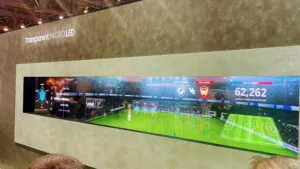At CES 2024, Samsung introduced a series of innovative technologies, aligning with their “AI for All” vision, whatever that meant. If you wanted a marketing job at CES, apparently the first question they ask you is, what are your favorite letters of the alphabet?
“Hmm, A and I, I think.”
“You got the job, congratulations!”
It’s a shame that Samsung didn’t choose to make it all about the Displays for All. Because the standout for Samsung at CES 2024 was its showing of a world first transparent MicroLED. There was a robot dog, Braille, an updated version of a previous model that I knew nothing about and didn’t really care much about. And some sort of chatbot called Gauss, a soundbar, some appliances, and more interestingly, a new service called Now+. This service adds smart home controls to Samsung TVs. With Now+, you can control lights, air conditioners, and other devices from your TV. You can also use your phone as a TV remote. Another feature, Daily+, customizes your TV based on information from your SmartThings devices.
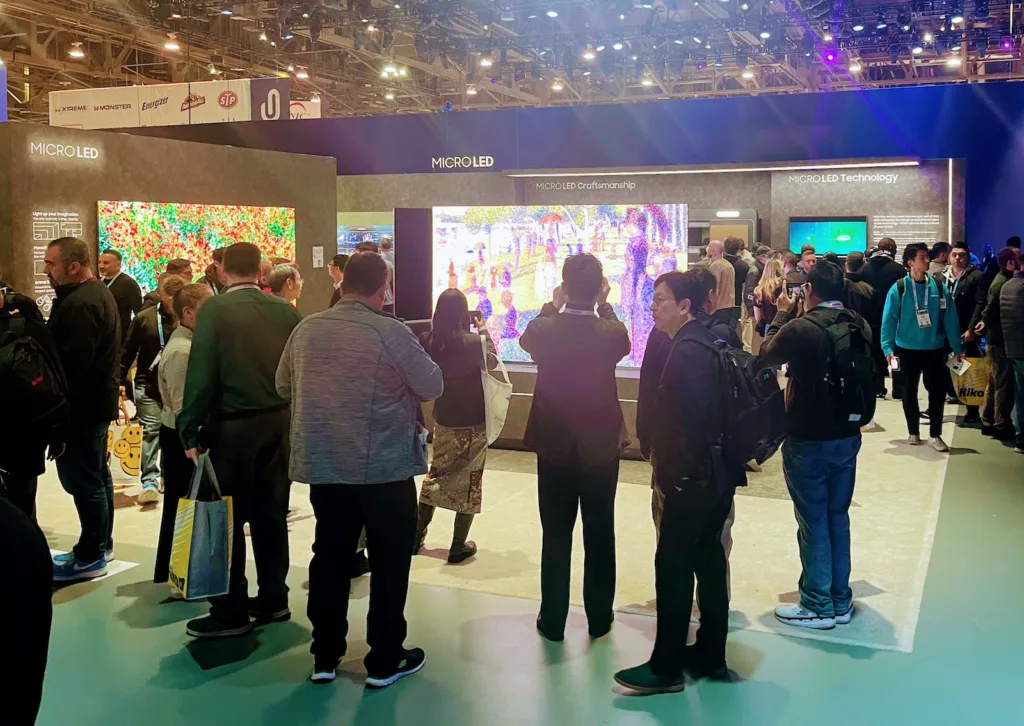

Samsung TVs can now detect smartphones nearby and use them as remotes. A new SmartThings TV Quick Panel will appear for easy control of devices, viewing cameras, and finding your phone. The TV can also turn on automatically as you approach and show important information about your smart home devices, like camera feeds, temperature, and laundry cycle status. Samsung didn’t provide much detail about when these features will be available, which TVs and devices are compatible, and if you need a Samsung smartphone for the remote control feature. They did mention that SmartThings is compatible with the Matter standard, meaning many connected appliances should work with it. But I guess you could call all of Now+ display related, too.
| Product Type | Product Name | Details |
|---|---|---|
| Display | Transparent MicroLED Display | Frameless design, 1 cm thick, high brightness and clarity. Yes, it is that impressive. |
| Foldable Device | Flex In & Out Flip | 360-degree foldable, lighter and thinner. More for the press and analysts than consumers. |
| Expandable Screen | Rollable Flex | Expands significantly from original size |
| Hybrid Screen | Flex Hybrid | Combines foldable and slidable technologies and there’s something Samsung calls Flextreme that’s a marketing term, it seems, to say that they test the heck out of these displays to make sure they don’t crease or crack because, they are very costly. |
| Automotive Display | Flex Note Extendable | Adjustable size from 11 inches to 17.3 inches |
| OLED Glass | 8.6-gen OLED Mother Glass | Produces multiple panels, nearly 3 m high |
| OLED Panel | Ultra-thin OLED Panels | Only 0.6 mm thick with half the weight and power consumption. |
| QD-OLED Technology | Third-Generation QD-OLED | Improved brightness, durability, and sharpness, 3000 nits brightness, and Pantone certification. |
| Monitor | 31.5-inch and 27-inch QD-OLED Monitors | High pixel density and refresh rates |
| XR Display | Micro OLED Displays | High definition, fine pixel density RGB OLEDos microdisplayys |
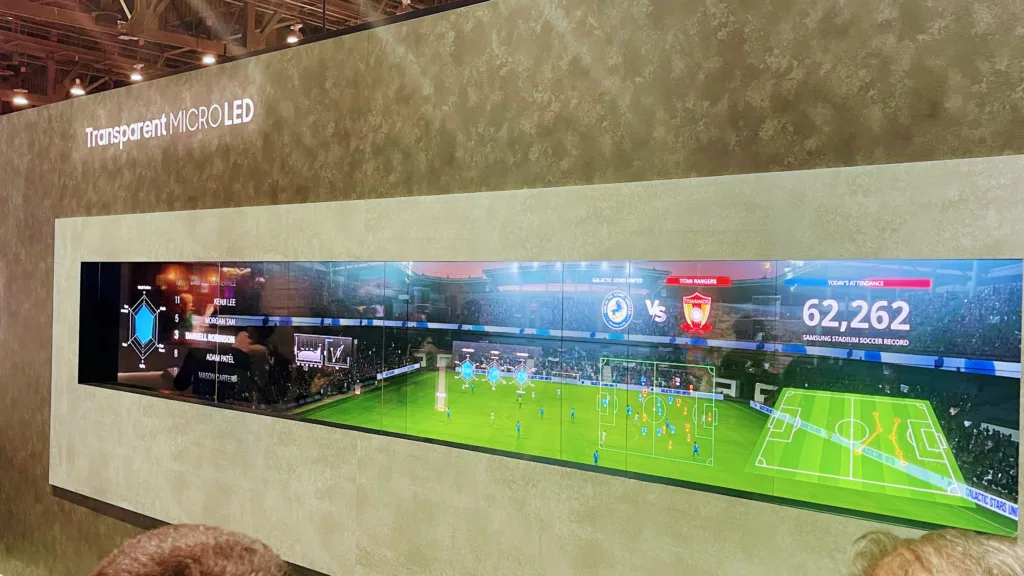
I don’t think Samsung was giving away any trade secrets or delivering a kick-ass plan for 2024 success, but what it was sending out a message, one that was pretty much a flex of muscle and power. There’s no other way to explain the extent of the technological display that it put forward. It’s hard to think that any of the MicroLED products shown are feasibly 2024 or 2025 products but if they were meant to be demonstrations of power and reach, they hit the mark. It was pretty arrogant but in that way that a very big powerful corporation can be.
Could it also be fear? There is always that to consider, the thought that Samsung is stomping its feet and puffing up its chest to say, Hey, we got this tech beat and will own it in a few years time. MicroLED, and semiconductor displays in general, are not existential threats to traditional glass display manufacturers, like Samsung, which has enormous investments in fabs to that effect.
The boss likes to give us these projected roadmaps on the deployment of MicroLED, and looking into the future, when we will start to see significant volumes, but it all seems artificial, a timeline to meet the investment criteria of traditional display manufacturers and their need to recoup their investment in factories that cost them billions and billions. In other words, are the major display manufacturers holding back our future display technologies.
You wouldn’t have thought so looking at Samsung’s booth but it also seemed like the company was saying, We’ll tell you when its time for MicroLED and we’ll tell you how it gets to the mass market. That’s my takeaway from the Samsung booth. And yes, when I asked them for more information or help, they were not very nice to me instead choosing to just push the crowds through the booth in a very methodical manner. That doesn’t bother me, but it did color my thoughts on what was really going on with the presentation.
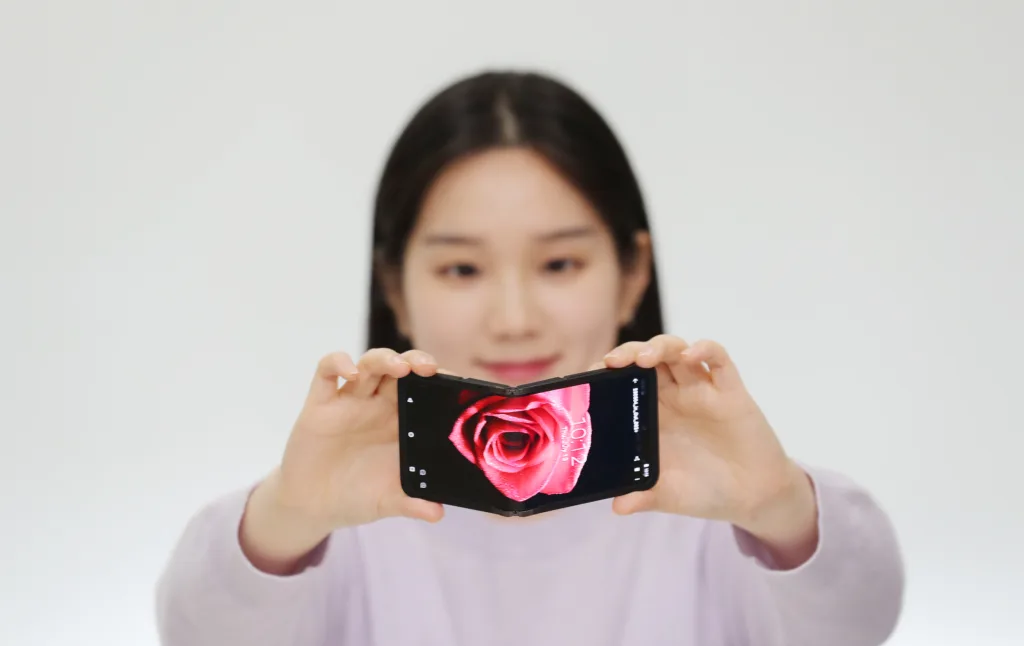

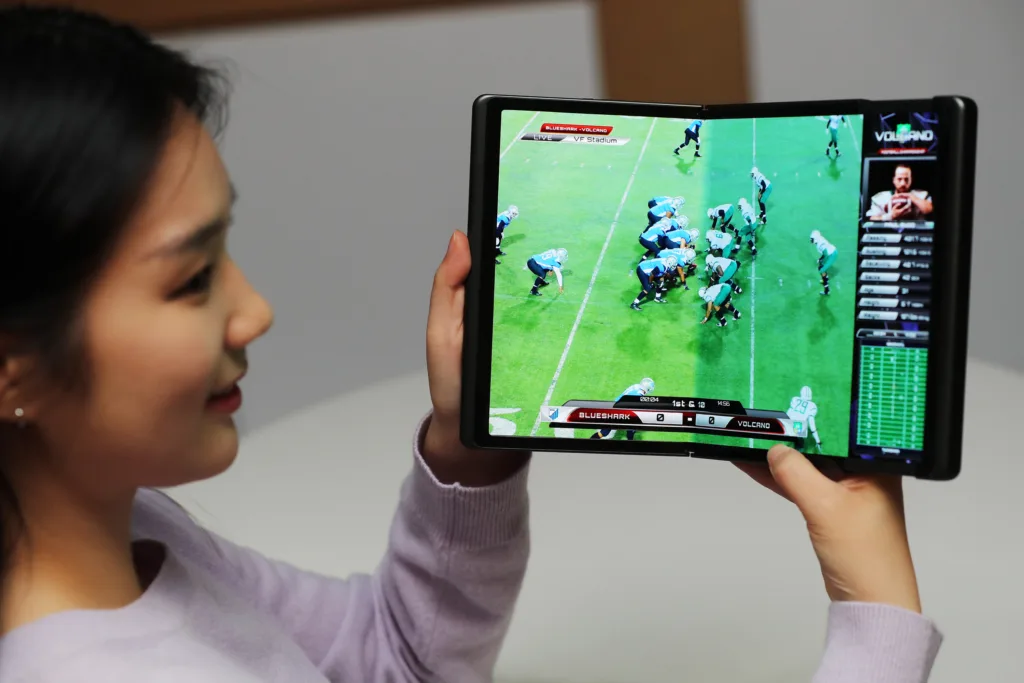
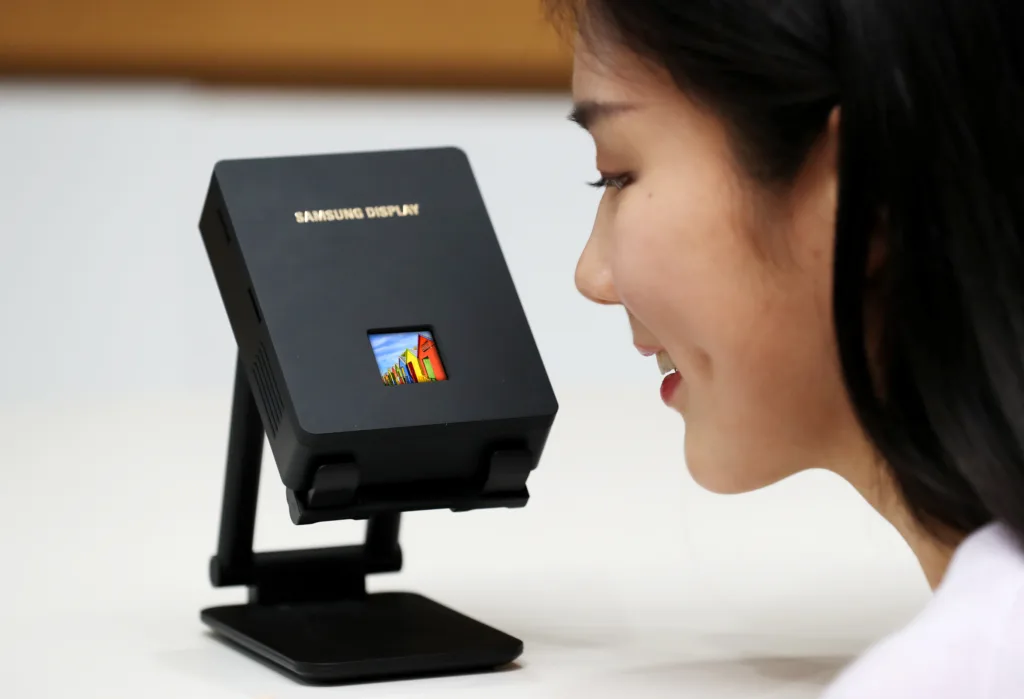

AI for All
In the spirit of fairness, Jong-Hee (JH) Han, Vice Chairman and CEO of Samsung’s Device eXperience (DX) Division, did give a presentation, with other executives at CES 2024, and there were some highlights which should go on the record:
- AI-Enabled Visual Display and Appliances: The speech highlighted the Samsung Neo QLED 8K QN900D, featuring the NQ8 AI Gen 3 processor, offers upscaling of low-resolution content to 8K, enhanced motion clarity, and Active Voice Amplifier Pro for optimized audio. Additionally, the Premiere 8K projector introduces wireless 8K transmission, and the Music Frame speaker integrates with Samsung TVs and soundbars for enriched audio. Now, here’s where AI does have a reason to shine, and that is accessibility features like gesture-controlled sign language and audio subtitles catering to viewers with different needs.
- AI-Powered Home Devices: Samsung showcased the evolved Ballie, the AI robot companion capable of interacting with other smart devices, and the Bespoke 4-Door Flex Refrigerator with AI Family Hub, which suggests recipes based on recognized food items and tracks their use-by dates. The Anyplace Induction range and Bespoke AI Laundry Combo feature AI-driven user customization, while the Bespoke Jet Bot Combo robot cleaner uses AI for effective cleaning. Yeah, it all sounds a little to contrived but, I wasn’t sold on robot vacuums until my girlfriend bought one for us.
- Galaxy Book4 AI-Ready Laptop Series: In collaboration with Microsoft, Samsung introduced the Galaxy Book4 series, offering seamless connectivity with Galaxy smartphones. Features include Microsoft’s AI Copilot for messaging and smartphone function integration, and the ability to use a smartphone’s camera as a PC webcam.
- Spatial Intelligence and SmartThings: Samsung’s SmartThings platform leverages spatial AI for a personalized home management experience, including digital floor plans, upgraded 3D Map View, and the ability to add family and friends to the ecosystem. Bixby voice assistant enhances smart home dynamics by routing commands to appropriate devices. Bixby is no fun and I am compelled to say that because it’s been around for a while and needs to be retired and replaced by something new if Samsung is going to be serious about AI.
- Home-to-Car Capabilities: A partnership with Hyundai introduces Home-to-Car and Car-to-Home services through SmartThings, enabling voice command control of vehicle and home functions.
- Collaboration with Harmn: Samsung and Harman are working together on in-car experiences, including Harman Ready Care for driver safety, Ready Vision for augmented reality windshield displays, and Ready Upgrade for updating vehicle hardware and software.
- Security and Privacy: Samsung Knox Matrix offers end-to-end encryption for enhanced security across devices, and Knox Vault has been expanded to cover more connected devices.
- Sustainability and Accessibility Efforts: Samsung focuses on incorporating recycled materials into its products and promoting sustainability through AI Energy Mode. New accessibility features include hands-free gesture control for digital appliances, auto-generated captions for calls, and Relumino Together viewing mode for inclusive TV watching.
- Tesla Collaboration: SmartThings Energy integrates with Tesla products, offering enhanced energy management and preparation for power outages.
I have to conclude by saying that Samsung had the big presence at this show and it had the biggest presence of all the display vendors. I wasn’t being cynical when I said this was a shot across the bow of the industry, just realistic. The company was flexing and doing it well. You can almost see the double bicep pose on the podium (if you don’t know what that is, just look up Arnold + double bicep pose or, better yet, ask AI).

